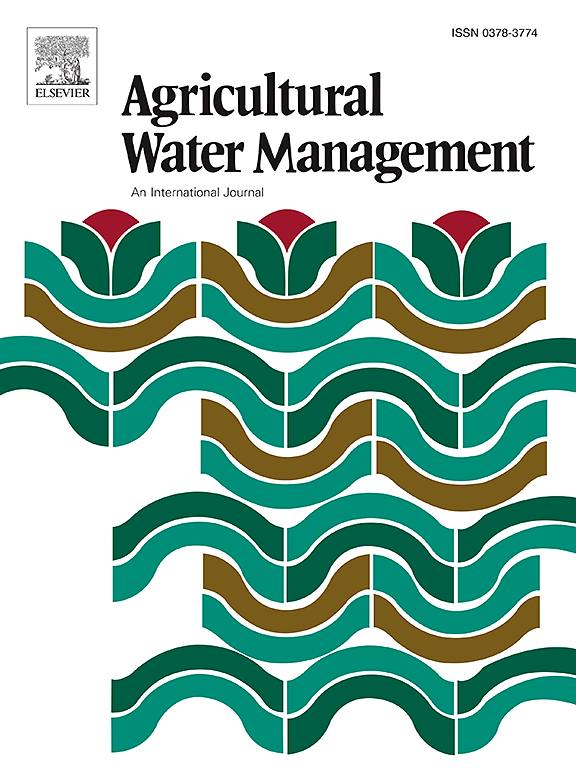Enhancing nitrogen fertilizer productivity in cotton fields in southern Xinjiang by improving the soil microenvironment through water and nitrogen management
IF 5.9
1区 农林科学
Q1 AGRONOMY
引用次数: 0
Abstract
Optimizing water and nitrogen management is an effective measure to reduce nitrogen fertilizer losses and environmental pollution risks. To quantify the effects of different water and nitrogen management practices on the microenvironment of drip-irrigated cotton fields without film in southern Xinjiang and partial factor productivity of N (PFPN), this study aims to clarify the relationship between the soil microenvironment and PFPN in cotton. This study established two irrigation levels of 45 mm (W1) and 54 mm (W2), and three nitrogen application rates of 150 kg·hm−2 (F1), 225 kg·hm−2 (F2), and 300 kg·hm−2 (F3), to analyze changes in soil physicochemical properties, soil enzyme activities, soil N2O emissions, soil microbial communities, cotton yield, and nitrogen fertilizer productivity in cotton fields. The results showed that at the same irrigation level, increasing nitrogen application significantly increased nitrate nitrogen (NN) content by 10.76–21.23 %, ammonium nitrogen (AN) content by 25.99–54.38 %, and N2O emissions by 47.19–101.53 %. It significantly reduced soil PH by 1.18–2.24 %, water-filled pore space (WFPS) by 7.61–17.61 %, and PFPN by 28.67–47.59 %. Under the same nitrogen application level, increasing the irrigation quota significantly increased WFPS by 12.80 %, N2O emissions by 17.43 %, and soil pH by 1.27 % (p < 0.05). It significantly reduced total nitrogen (TN) by 14.93 %, NN by 8.60 %, and AN by 10.96 %. Significant differences were observed in the activities of soil urease (URE), alkaline phosphatase (AKP), catalase (CAT), and sucrase (SUC) under different treatments in cotton fields. Increasing both the irrigation quota and nitrogen application significantly reduced bacterial alpha diversity. Under high water and high nitrogen treatments, several nitrogen cycle-related bacterial genera, such as Nitrospira and Sphingomonas, were enriched. The structural equation model (SEM) indicated that optimizing water and nitrogen management can improve PFPN in cotton by enhancing the soil microenvironment. The comprehensive TOPSIS evaluation showed that the combination of a 54 mm irrigation quota and a nitrogen application rate of 150 kg·hm−2 performed best in reducing N2O emissions, enhancing soil microbial diversity, cotton yield, and PFPN. This study further improves the theoretical system of non-mulched drip irrigation cotton production in southern Xinjiang, facilitates the promotion of clean agricultural production practices, and provides a research basis for improving the soil microenvironment in typical arid farmlands.
求助全文
约1分钟内获得全文
求助全文
来源期刊

Agricultural Water Management
农林科学-农艺学
CiteScore
12.10
自引率
14.90%
发文量
648
审稿时长
4.9 months
期刊介绍:
Agricultural Water Management publishes papers of international significance relating to the science, economics, and policy of agricultural water management. In all cases, manuscripts must address implications and provide insight regarding agricultural water management.
 求助内容:
求助内容: 应助结果提醒方式:
应助结果提醒方式:


